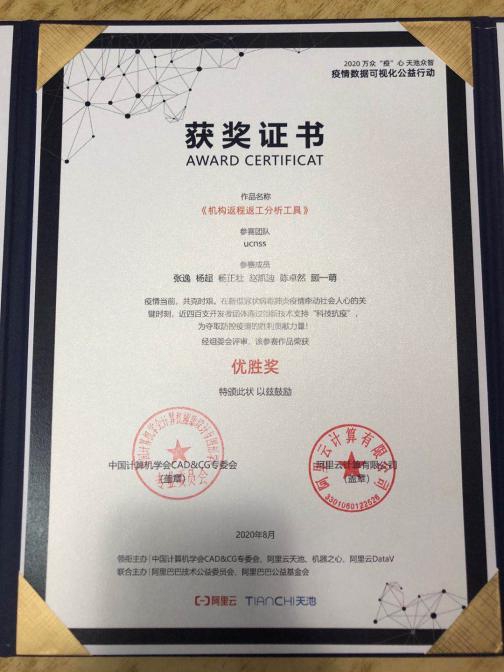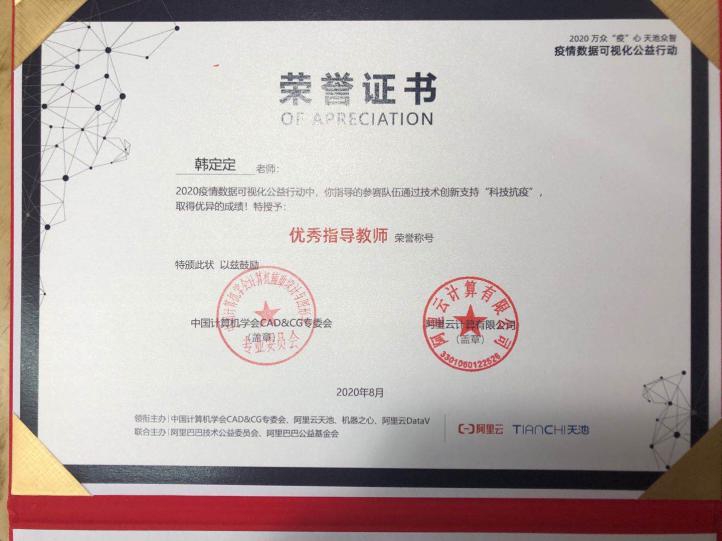In August 2020, the public welfare initiative "Thousands of Hearts Fighting the Epidemic, Tianchi Wisdom" focused on pandemic data visualization. It was jointly launched by Alibaba Cloud Tianchi Platform, the CAD&CG Committee of the China Computer Federation, Machine Heart, Alibaba Cloud DataV, and Datawhale. The initiative gathered numerous developers to address various needs, such as pandemic trend visualization, public science education, epidemic forecasting, supply chain tracking, and the return-to-work and return-to-home situations across industries. The initiative aimed to explore the connections between complex, heterogeneous, multi-source data, and create positive works that were presented to the public in an engaging way, contributing to solving real-world challenges in the fight against the epidemic. Nearly 400 developer teams participated, submitting over 100 works.
Professor Dingding Han, the leader of the Ultra-Complex Network Science and Intelligent Systems Laboratory, was awarded the title of Outstanding Supervisor for her guidance. Under her leadership, the UCNSS team won the Excellence Award with their work, "Institutional Return-to-Work and Return Analysis Tool". The key members of the UCNSS team include: Dingding Han, Zhang Yi, Yang Chao, Yang Zhengzhuang, Zhao Kaidi, Chen Zhuoran, and Gu Yimeng.
The Institutional Return-to-Work and Return Analysis Tool helps business and organizational managers understand the status of all employees on a given day, aiding in intelligent decision-making. Specifically, it constructs a multi-regional COVID-19 epidemiological model based on population mobility rates to study the relationship between population movement and the spread of the novel coronavirus. It uses a hierarchical geographical model to divide the regions into grids and employs a multi-agent simulation method to guide individual movements based on activity logs, simulating the spread of the epidemic.
The Institutional Return-to-Work and Return Visualization Analysis System includes three main features:
1. Employee Distribution: Helps decision-makers visualize the distribution of employees in provinces with more severe outbreaks, enabling early arrangements.
2. Employee Return-to-Work Status: Displays the origin and transportation methods of employees returning to work on a dynamic basis, offering personalized safety recommendations.
3. Employee Quarantine Status: Analyzes and visualizes the status of employees who have returned to the company, helping decision-makers balance company productivity and employee safety.
These features assist in finding an appropriate balance between company capacity and employee safety. Below are the main functional modules of this visualization analysis system.
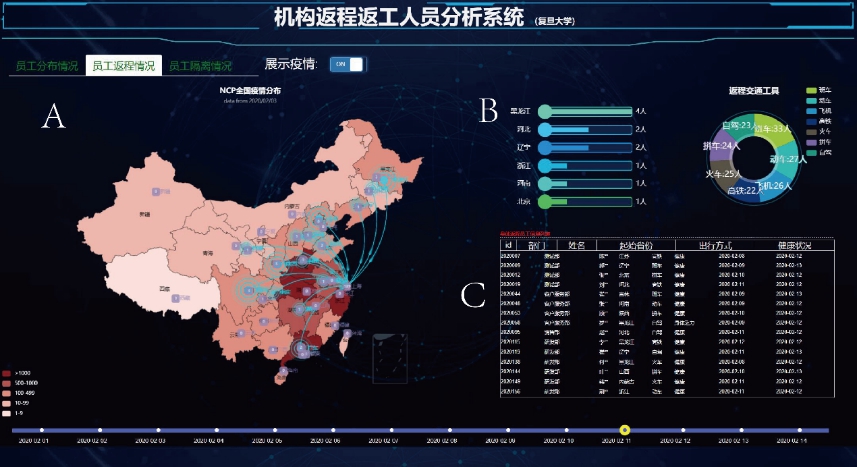
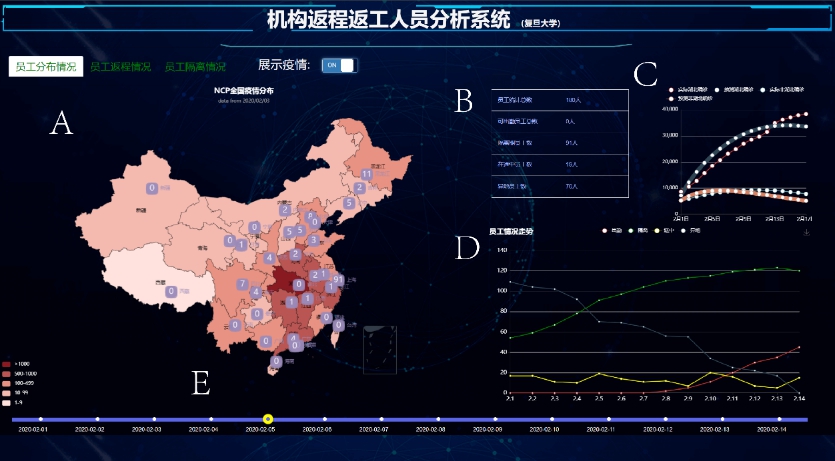
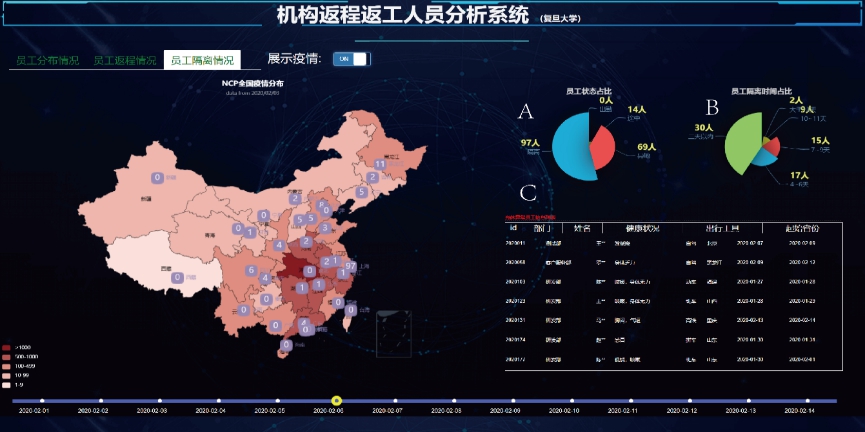
Furthermore, the Institutional Return-to-Work and Return Visualization Analysis System can be expanded into a global unconventional emergency management simulation platform. This platform consists of several tools, including artificial society scenario construction, experimental design for artificial society simulations, support environments for artificial society computational experiments, artificial society state visualization, and an emergency decision-making platform.
The artificial society scenario construction tool generates artificial cities based on demographic and geographic statistical data from urban populations, providing population data support for computational experiments. Real-time epidemic dynamic data is then injected into the system to set parameters for the various models needed for the epidemic simulation experiments.
Next, the artificial society computational experiment design tool sets emergency intervention measures for different countries based on the World Health Organization's public health emergency response guidelines, generating a large number of experimental samples. Using these samples, large-scale artificial society simulation tools are employed to conduct computational experiments, while the artificial society state visualization tool is used to present the results of these experiments afterward.
Finally, the emergency decision-making platform uses the information provided by the visualization tools for human-in-the-loop hybrid intelligent decision-making. The results of the decisions are used to adjust the artificial society scenario further, initiating the next iteration. Through repeated computational experiments, the platform ultimately provides quantitative support for emergency decision-making.
